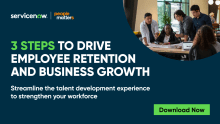Tackling the hybrid paradox: How tech can bridge the disengagement gap in APAC

The hybrid work landscape across major economic regions of APAC like India, Australia, and Southeast Asia has transformed significantly and today is an important part of labour market dynamics. For companies, hybrid and remote work helps them access global talent and provide flexibility to their employees. But it also brings unique challenges in employee engagement, experience and retention. The issue of unaddressed burnout and blurring work-life boundaries impact employee well-being and performance.
To see how impactful digital solutions that blend AI with intelligent workflow management can help businesses with their hybrid work strategy and ensure the employees who work remotely or in a hybrid work set-up feel engaged to deliver results, it is first important to look at those challenges more closely.
A paradigm shift for major economic regions across APAC
Like many workforce trends, remote and flexible work found a new sail in their winds after the pandemic. The post-pandemic world of renewed focus on flexibility and work-from-home options helped both businesses and employees weather the storm. With time companies across have today APAC reverted to calling people back to the office, felxibility and remote work options remain embedded in the new workforce structure.
Today, hybrid work blends remote and in-office work, offering employees flexibility while striving to maintain organisational productivity. However, this model isn't without its hurdles. Disengagement among remote workers and the challenge of retaining talent in a competitive job market are pressing concerns for businesses navigating this new landscape.
The disengagement dilemma
Remote work can inadvertently lead to feelings of isolation and disconnection among employees. Being able to execute a hybrid work structure successfully in your company is critical to keeping employees happy and engaged today.
A broken workplace experience and the lack of organisational support have shown to impact workplace engagement—and by extension, productivity—significantly. And while human connections remain important, they have to reinforced with the right digital solutions. A recent study on workplace experience by ServiceNow explains how addressing experience through the use of HR tech solutions is yielding better results for companies than those who don’t. Iin a time when business complexity is rising and performance has become more critical than ever. Thus while the hybrid work models are on the rise, failing to address the possible challenges of disengagement and bad employee experience will impact how effectively HR can deliver on workforce expectations.
Streamlining workflows for better results
Enterprises are increasingly turning to technology platforms like ServiceNow to mitigate these challenges. By centralising communication, automating routine tasks, and providing seamless digital experiences, such platforms empower employees to work more efficiently regardless of their physical location.
The good news is that technology platforms can be powerful allies in creating a seamless and engaging hybrid work experience. Beyond simply enabling communication and collaboration, robust digital platforms can engage and enable hybrid workforces to be more productive. Here's how:
- AI-backed self-service platforms: Flexibility requires employees to have a robust self-service tool that embeds AI to help them manage workflows and take more control of their work journeys.
- Employee journey management: To further improve how productive a hybrid workforce is, companies need to look at how they are crafting employee journeys from scratch. Platforms like ServiceNow help raise productivity across geographically distributed workforces by enabling companies to personalise employee growth journeys, map skills, and deliver on employee growth expectations to help hybrid workers be better at what they do.
- Performance Management Tools: Cloud-based performance management systems allow for regular feedback and goal setting, ensuring remote workers feel valued and supported in their career development.
Building a winning EX strategy
Technology solutions are a crucial component of solving the EX puzzle. With hybrid work further complicating how EX and engagement can delivered in a dynamic landscape like APAC, here are some additional tips for a successful EX strategy:
- Clearly defined hybrid work policies: Set clear expectations around communication, collaboration tools, and meeting schedules to avoid confusion.
- Focus on building a culture of trust and inclusion: Organise virtual team-building activities and encourage open communication to foster a sense of belonging for remote workers.
- Invest in training managers on effective hybrid leadership: Equip managers with the skills to lead and motivate teams in a dispersed environment.
The road ahead
By embracing the right technology platforms and fostering a culture of inclusion, businesses in ANZ & SEA can navigate the hybrid work landscape and create a positive EX that drives engagement and retains top talent. Remember, a well-designed hybrid model isn't just about flexibility, it's about creating an environment where all employees, regardless of location, feel valued, connected, and empowered to do their best work.









